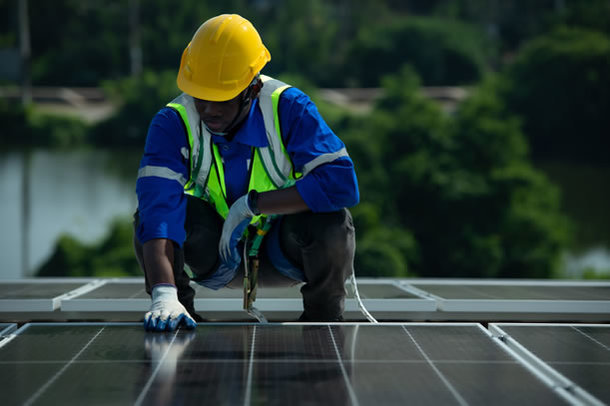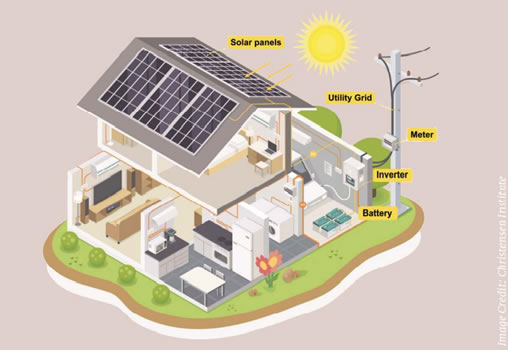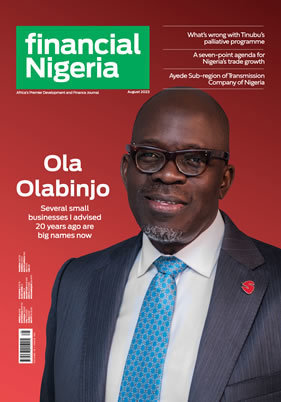Taking on the knowledge barrier: Solar lessons for consumers and producers

Feature Highlight
One of the major obstacles to solar energy adoption in Nigeria and many growth economies is knowledge.
Solar energy systems can transform a complicated and expensive product – power – into a simple and affordable one, but…how exactly does that happen?
Solar energy has a solid foothold among electricity options, and because there remains mass nonconsumption of electricity in growth economies, solar energy solutions will only continue to become increasingly popular. Therefore, now is the perfect time to get a firmer grasp on understanding exactly how solar energy systems work. Though many have heard of solar energy, perhaps even used it, not everyone knows how these systems work, what they consist of, or more specifically, how to be a successful market-creator in the solar industry of growth economies.
One of the major obstacles to solar energy adoption in Nigeria and many growth economies is knowledge. This article is designed to break down this barrier and further the collective understanding of both solar energy systems and innovative strategies to fuel its adoption.
The components (for consumers)
Standard residential or commercial solar systems consist of a core set of components: the solar panels, the inverter, the electrical panel, the meter, the racking equipment, and the battery, which is optional.
The solar panels are what absorb the sun’s energy and convert it to electricity. They work by collecting photovoltaic energy from the sun and delivering that energy as direct current (DC) power to an inverter.
The inverter takes the DC electricity generated by the solar panel and converts it to alternating current (AC) electricity. There are different types of inverters, such as string inverters or microinverters, with different mechanical and technical characteristics that serve different application purposes. For example, the string inverter is mounted on the side of a home and collects all the electricity generated by the system in one place, while the microinverter is attached to individual solar panels allowing the conversion to happen on each panel.
The electrical panel then distributes the energy to the home or business. It’s connected to every appliance on the system.
The meter or monitoring equipment measures the flow of electricity. If your panels generate more electricity than is used and your system is connected to the grid, excess energy can be sent to the grid. Or, on the contrary, if your panels aren’t producing enough electricity and your system is connected to the grid, energy can be drawn from the grid.
The racking or mounting equipment consists of a combination of attachments, such as (but not limited to) rails, brackets, wire clips, and braces. This equipment is essential for both rooftop or on-ground set-ups.
Finally, rather than sending excess energy to the grid, or in cases where the solar system is not connected to a grid, batteries are an option to store excess energy for use at a later date. This can come in handy when you’re not connected to the grid, when the grid is down, or when your solar panels aren’t producing as much energy as needed.
An image of full components of solar power installation
Full solutions, not components (for producers)
Successful market-creating innovators, especially in low-income countries, typically don’t sell components – they sell full solutions. In order to sell these full solutions, they may need to become them.
To elaborate, low-income countries often don’t already have a reliable ecosystem of distribution, logistics, or retailing of solar energy, meaning that innovators must integrate and either take on multiple roles or employ an interdependent architecture to be successful.
In the past, successful market-creating innovators in similar situations, such as Mexican bakery giant Grupo Bimbo, have had to take on multiple jobs to fill institutional and infrastructural voids to sell their products. In Bimbo’s case, to be able to sell loaves of fresh bread in the 1940s, Bimbo didn’t only have to produce the bread, but also supply the wheat, build the flour mills, provide capital to farmers, and invest in the education of their employees.
In another case study, M-Kopa, a successful solar power company that started operations in Kenya in 2011, employed an interdependent architecture in their solar solutions. An interdependent architecture is one that keeps product architecture in-house, has unique components, and is optimized for function and reliability as opposed to cost or speed. M-Kopa sells complete solar energy units that power charger outlets, lights, televisions, and refrigerators, all of which are designed and manufactured by the company.
By adopting multiple roles and keeping everything in-house, an organization limits its reliance on third-party actors, and the chance of success is higher. These are critical strategies for solar energy producers and innovators in growth economies.
By furthering the collective understanding of the components of solar energy systems and the important concept of selling “full solutions,” innovators and entrepreneurs are another step closer to sustainably shrinking the energy deficit in the world.
Sandy Sanchez is a Research Associate, Global Prosperity, Clayton Christensen Institute.
Other Features
-
How much is a $100 Steam Gift Card in naira today?
2026 Complete Guide to Steam Card Rates, Best Platforms, and How to Sell Safely in Nigeria.
-
Trade-barrier analytics and their impact on Nigeria’s supply ...
Nigeria’s consumer economy is structurally exposed to global supply chain shocks due to deep import dependence ...
-
A short note on assessing market-creating opportunities
We have researched and determined a practical set of factors that funders can analyse when assessing market-creating ...
-
Rethinking inequality: What if it’s a feature, not a bug?
When the higher levels of a hierarchy enable the flourishing of the lower levels, prosperity expands from the roots ...
-
Are we in a financial bubble?
There are at least four ways to determine when a bubble is building in financial markets.
-
Powering financial inclusion across Africa with real-time digital ...
Nigeria is a leader in real-time digital payments, not only in Africa but globally also.
-
Analysis of NERC draft Net Billing Regulations 2025
The draft regulation represents a significant step towards integrating renewable energy at the distribution level of ...
-
The need for safeguards in using chatbots in education and healthcare
Without deliberate efforts the generative AI race could destabilise the very sectors it seeks to transform.
-
Foundation calls for urgent actions to tackle fake drugs and alcohol
Olajide Olutuyi, Executive Director, Samuel Olutuyi Foundation, warns: “If left unchecked, the ‘death ...
Most Popular News
- NDIC pledges support towards financial system stability
- Artificial intelligence can help to reduce youth unemployment in Africa – ...
- ChatGPT is now the most-downloaded app – report
- Africa needs €240 billion in factoring volumes for SME-led transformation
- CBN licences 82 bureaux de change under revised guidelines
- Green economy to surpass $7 trillion in annual value by 2030 – WEF












